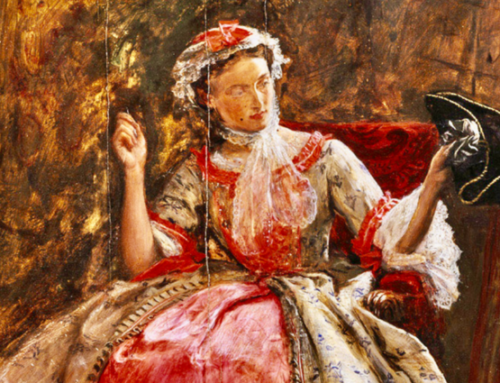 Lewis H. Lapham of Hearst Magazine fame is a man on a mission. Recently at an event in Washington, D.C. sponsored by the Hirshhorn Museum, called “Days of Endless Time,” Mr. Lapham plumbed the depths of time in lighthearted, humorous banter with two writers. The conversation gave a peek into the rich literary world of Mr. Lapham’s New York-based magazine, Lapham’s Quarterly.
Lewis H. Lapham of Hearst Magazine fame is a man on a mission. Recently at an event in Washington, D.C. sponsored by the Hirshhorn Museum, called “Days of Endless Time,” Mr. Lapham plumbed the depths of time in lighthearted, humorous banter with two writers. The conversation gave a peek into the rich literary world of Mr. Lapham’s New York-based magazine, Lapham’s Quarterly.
In a recent issue of Lapham’s Quarterly—titled “Foreigners”—one will find contributions from Flannery O’Connor, Marco Polo, and Albert Camus. The LQ website announces that the forthcoming issue “traces the global history of ‘us’ and ‘them,’ and our charts and graphs follow that of nineteenth-century immigrants, men and women who have ‘gone native,’ common enemies among nations, and barbarians at the gates. Lapham’s is not your typical quarterly.
In 2007, the inaugural issue, “States of War,” went to press. The magazine contained dozens of essays and excerpts from writers ranging from Thucydides to Mark Twain. A publication dedicated to a single topic each quarter—religion, arts & letters, sports, Eros—Lapham’s Quarterly is a bountiful feast for the ravenous mind. My favorite issue, published in the winter of 2013, was on the topic of intoxication.
 “Wine, dear boy, and truth,” reads the issue’s epigraph—a quote from Alcaeus, circa 600 BC. “Wine is a peephole on a man.” Among the issue’s contributors are Omar Khayyam, Dorothy Parker, Plato, F. Scott Fitzgerald, and St. Hilegard of Bingen. The art interspersing the excerpts and quotes of literary giants include the mythical—a terracotta sculpture of the head of Dionysius from Pakistan (c. 400) and a portrait of Bacchus in the court of Midas by Dirk Valkenburg (1700) and the Triumph of Bacchus by Diego Velazquez (1628); the anticipated classic images of Gin Lane by William Hogarth (1751) and The Drunkard’s Progress: from the First Glass to the Grave by Nathaniel Currier (1846). Images of the sacred include The Ecstasy of Mary Magdalene by Louis Finson (c. 1605). Images of contemporary icons of various degrees of intoxication include James Bond (Sean Connery) pouring a glass of Bollinger for his lady of the night in Goldfinger and, on the inside front cover, Holly Golightly (Audrey Hepburn) posed mid-puff with her lengthy cigarette holder in the middle of a party.
“Wine, dear boy, and truth,” reads the issue’s epigraph—a quote from Alcaeus, circa 600 BC. “Wine is a peephole on a man.” Among the issue’s contributors are Omar Khayyam, Dorothy Parker, Plato, F. Scott Fitzgerald, and St. Hilegard of Bingen. The art interspersing the excerpts and quotes of literary giants include the mythical—a terracotta sculpture of the head of Dionysius from Pakistan (c. 400) and a portrait of Bacchus in the court of Midas by Dirk Valkenburg (1700) and the Triumph of Bacchus by Diego Velazquez (1628); the anticipated classic images of Gin Lane by William Hogarth (1751) and The Drunkard’s Progress: from the First Glass to the Grave by Nathaniel Currier (1846). Images of the sacred include The Ecstasy of Mary Magdalene by Louis Finson (c. 1605). Images of contemporary icons of various degrees of intoxication include James Bond (Sean Connery) pouring a glass of Bollinger for his lady of the night in Goldfinger and, on the inside front cover, Holly Golightly (Audrey Hepburn) posed mid-puff with her lengthy cigarette holder in the middle of a party.
A graph of “Gross Domestic Consumption” presents to the readers the use of cannabis, cocaine, opiates, and ecstasy around the world and a chart presents the places and times throughout history in which drinking on the job was allowed or encouraged—from beer in 3100 BC in Egypt to enhance the moods of the pyramid builders to alcohol, amphetamines, and marijuana in 1991 in Sierra Leone to desensitize child soldiers. They neglected, surprisingly, a notable contributor to The Imaginative Conservative—Roger Scruton—and his words on wine’s intoxication in I Drink, Therefore I am, or on the intoxication of love and music in Death-Devoted Heart (excerpts I would have included had I any say in the matter). C’est la vie.
The remembrance of the intoxication issue, however, is bittersweet. I turned down my dream internship at Lapham’s in New York that fall to work at a journalism outlet in Washington, D.C. When I entered the world of journalism, I had never heard of the Drudge Report. The day finally came when my editor discovered this fact. I kept hearing all this talk around the office about getting “drudged.” One day, I mustered the courage to ask what that meant.
“You’ve never heard of Drudge?” asked one of the editors, with a measured level of snark.
“No,” I replied. Mirroring his level of snarky superiority, I stated: “I studied Philosophy.”
I was Drudge-shamed. I attempted to justify my ignorance with an explanation of the summers I spent either as a camp counselor in sunny South Florida or studying the phenomenology of love at the Kierkegaard Library at secluded St. Olaf College. While I did not spend college days scrolling through the Drudge Report, I did spend it flipping the pages of Lapham’s Quarterly.
Lapham’s may sound a tad too high-brow to grab the attention of journalists. Yet its pages of history, philosophy, art, science, and poetry are the stuff that should inform journalists if the words they seek to put down on paper are to be more than mere ephemera. Lapham’s Quarterly is an “antidote to the age of Buzzfeed,” and Lapham is not pandering to “digital-age ignorance,” but seeking to entice readers through his sophisticated journal into loving history, art, and philosophy. If news is indeed “a concentration on the ephemeral,” as John Sommerville wrote in First Things in October 1991, “the flotsam and foam on the surface of history,” Lapham’s provides a calculated meditation on the eternal. Although the ideas examined throughout the issue—in essays, poems, short stories, and house-made charts and graphs—are perennial, LQ is no stranger to the invention of the Internet.
The recent premiere of Lapham’s new website, combined with an impressive social media presence on Twitter and Facebook—and a Tumblr that makes “history reel”—LQ makes the online presence of most other magazines or nonprofits look uninteresting at best, and at worst, like they are not even trying. Even their well-produced podcasts are thrilling for those who have the time to listen to Lapham’s during their morning commute.
In college, Lapham’s was a publication I waited for each quarter with anticipated longing. I elected to not subscribe, for I preferred the element of surprise. This delayed gratification meant frequent trips to the on-campus Barnes and Noble, scanning the newsstand each trip, hoping to find the stark white cover to discover what the topic of the quarter would be. Each time I spotted the newest issue, it was like Christmas morning for a college nerd.
Unlike most magazines that subscribers anxiously anticipate receiving in the mail for its timely content, Lapham’s Quarterly is just the opposite. The latest issue on the concept of time itself is a magazine in which most of the featured contributors are long gone and the topics are perennial. It is not a magazine to get lost in a stack of glossies, skimmed, and recycled. It is a tome of wisdom to be set on a shelf and admired, referenced continually and pulled out when you want to impress guests, whether in your office or in your living room.
For Washingtonians, the appeal of Lapham and his quarterly transcends the political realm. Lapham is by all accounts an East-coast liberal, born in San Francisco and educated at Yale, with political leanings that would likely make the readers of The Imaginative Conservative grumble. Yet, in his carefully curated, aesthetically appealing magazine, he entices readers to engage ideas beyond the banter of D.C. and the political machine. Out of a liberal mind came a deeply, profoundly conservative publication, a veritable monument to Western civilization. Yet how many conservatives have heard of it? Lapham’s Quarterly is the finest publication that few know about.
For readers who love to don period attire, to go dancing, or to see and be seen at glamorous galas, Lapham’s Quarterly brings history to life each year with their annual Decades Ball. The theme for 2014 was the 1870s. This past June, LQ drew a few celebrity participants, including an excerpt from Anna Karenina read by Maggie Gyllenhaal and a performance of Gilbert and Sullivan’s The Pirates of Penzance sung by Glenn Close and Jonathon Groff.
As an underpaid intern for a conservative political journalism outlet, I found myself trolling the free book table, filled with galley copies of titles both interesting and banal. Each week, I would smuggle ideas ranging from Robbie George’s argument for traditional marriage in What is Marriage for? to Edward Klein’s scathing critique of Obama, The Amateur. Noticing my affinity for the book table, a writer commented on my bundle of books, disclosing nonchalantly that journalists do not read. My jaw dropped to the floor. Still wide-eyed and bushy-tailed from four years of studying the great works of Western civilization, I could not fathom giving up on books. Was this to be my fate, too?
Perhaps more exposure to Lapham’s Quarterly will strengthen the power of modern journalism. While many politicians and journalists alike do not have time to read the works of Proust or Flaubert in full, a carefully curated array of excerpts from some of the great voices of Western civilizations will suffice. It is the ideal publication for the on-the-go Washingtonian. It is a rich Thanksgiving feast condensed into a prix fixe lunch hour meal.
Lapham’s words at last year’s Decades Ball served as clarion call for wisdom, echoing Cicero’s warning: “Not to know what happened before one was born is to always be a child.” In true Kierkegaardian fashion, Lewis Lapham reminds us that “every age is an age of anxiety. History gives you the understanding that this has happened before, and we’ll get through it.”
Books on the topic of this essay may be found in The Imaginative Conservative Bookstore.







Concerning your exchange with the journalist embarrassment was uncalled for. The Kierkegaard response was perfect though I doubt the clod got it or was taken aback. Kierkegaard held the then media in contempt btw, Some things don’t or shouldn’t change. Most assuredly journalists don’t read, they seem rather proud of it.
The Quarterly is an excellent publication, superb standards and an excellent variety of interesting subjects.
Fortunately it minimizes Mr. Laphams expeditions and ruminations on things political. Or has he mellowed?
I recently zipped through the “Foreigners” issue and was mightily impressed. I’ve looked through Laphams before but always found myself rushed for time and thus unable to enjoy the issues in full. Thank you for this-I shall be sure to look for the next issue with great anticipation!
“Noticing my affinity for the book table, a writer commented on my bundle of books, disclosing nonchalantly that journalists do not read. My jaw dropped to the floor. Still wide-eyed and bushy-tailed from four years of studying the great works of Western civilization, I could not fathom giving up on books. Was this to be my fate, too?”
Do keep reading, Ms. Schroeder. Journalism only makes sense when practiced by those who understand how and why things happen, which in turn requires an understanding of history, philosophy, and much else besides. The undergraduate journalism major (like the undergraduate education major) is a blight on our society.